With no spacecraft visiting the ice giants for over 30 years, Anthony King speaks to the planetary scientists planning a return visit
Uranus was discovered in March 1781 by astronomer William Hershel from his garden in Bath. More than 200 years later, the Nasa spacecraft Voyager 2 flew past Uranus in January 1986, our first ever close encounter with the seventh planet of our solar system. It remains the only visit to a planet that is around 20 times more distant from the sun than Earth.
But plans are afoot to return. A once-in-a-decade report from the National Academies of Sciences in the US, released last April, recommends Uranus as the highest priority flagship mission of the US space agency, Nasa. The report advised that an orbiter and probe should take off in the early 2030.
Uranus is an ice giant, along with the similarly sized but even more distant Neptune. The description conjures images of a frozen world, but the name mostly distinguishes them from the gas giants, Jupiter and Saturn. Their true nature is surprisingly obscure, much more so than the gas giants dominated by hydrogen and helium, which have been explored more recently by probes and orbiters.
The two ice giants, sized between the rocky worlds and gas giants, are the least known planets in the solar system. ‘There aren’t too many final frontiers left – places we haven’t been and studied at least in some level of detail,’ says Amy Simon, planetary scientist at Nasa’s Goddard Space Flight Center in Maryland, US. ‘Uranus is one.’ Uranus and Neptune differ from the gas giants in chemical composition because they were likely formed further out from the sun, with heavier elements.
A Uranus mission can address priority questions on the formation of the outer solar system, the structure and evolution of giant planets, their moon systems and even exoplanets, the NAS report noted. The planet boasts rings, interesting moons, a complex atmosphere, an undetermined interior and a 97.8° tilt on its axis (causing seasonal extremes), as well as a weird magnetic field. ‘If we don’t do the ice giants, we’re missing half the story of the solar system,’ says Athena Coustenis, planetary scientist at Paris Observatory in France.
The Voyager mission was a wonderful scout – but it couldn’t look at the interior
Uranus was chosen over Neptune simply because it is closer to Earth and Jupiter will be well positioned to give a gravity slingshot to a spacecraft in the 2030s. No new technology is required either, though instrumentation available will be a step up from Voyager 2, launched back in 1977. ‘The Voyager mission was a wonderful scout,’ says Coustenis, who works on its data, ‘but it didn’t have adequate payload to look at the interior of the planet and only a probe can do in situ atmospheric measurements.’
The James Webb Space Telescope, launched on Christmas day 2021, will soon train its sights on Uranus, giving wonderful views of the planet. But haze and icy clouds impede views into the planet’s atmosphere, and a telescope cannot detect gravitational or magnetic fields. ‘Planetary science is fundamentally driven by data,’ says Bethany Ehlmann, a planetary scientist at the California Institute of Technology in the US and a member of the NAS survey committee. ‘And for Uranus and Neptune we have the least amount of data of all planets in the solar system.’
Interior mysteries
There were fleeting glimpses of the Uranian gravitational field and magnetosphere from Voyager 2, but better insights require a dedicated orbiter. While the mass and radius of Uranus are known, models only sketch its structure from patchy data. Neat textbook drawings of an interior of ice, surrounding a denser rocky core remain educated guesses, say experts. ‘Calling Uranus an ice giant is a bit misleading,’ says Ravit Helled, a planetary scientist at the University of Zurich in Switzerland. ‘People imagine an icy interior that is both solid and water-dominated, but the planet is likely to have liquid parts and might be more of a rock giant. We really don’t know.’ Pluto, for example, turned out to be 70% rock and 30% water. The interior of Uranus could be rocks or ices of water, methane or ammonia, with some hydrogen and helium. How much water ice is present is unknown.
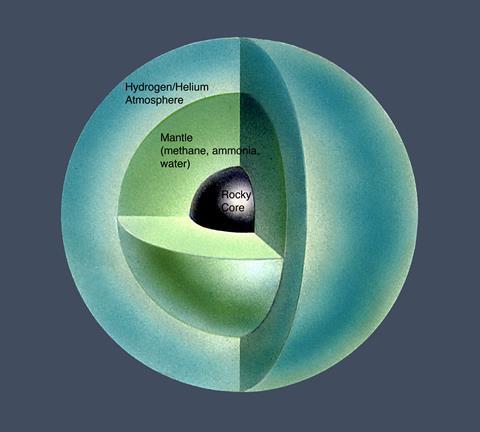
Helled started her career studying Jupiter and Saturn, before moving on to Uranus and Neptune. Only then did she realise ‘how little we know about them’, she recalls, ‘which was a bit shocking’. She was fascinated by how many key unanswered questions there are about their formation, evolution and composition. ‘The interior of the planet [Uranus] is a real mystery,’ confirms Patrick Irwin, a planetary physicist at the University of Oxford, UK. ‘From the Voyager observations of gravity fields, one solution that worked well was that Uranus is made mostly from icy materials.’
More exotic structures have been proposed: an Earth-sized rocky world beneath clouds and gas, or a weird slushy mix of ammonia, methane and water that condenses into supercritical fluids at depth. Other proposals include a dense core of heavier elements such as iron, or perhaps even a hot carbon ocean with chunks of diamond-bergs. It can be fun to speculate, but these ideas teeter on a thin base of data. ‘We don’t know much about the internal structure and composition,’ says Helled. She believes that Uranus is unlikely to have a layered interior, with distinct mantle and core, given what we learnt from visits to Saturn and Jupiter. ‘We have models, but I suspect they will change entirely once we get there,’ says Simon.
Blue haze
Hydrogen probably comprises four-fifths of the Uranian upper atmosphere, with the remainder mostly helium, but also important cloud-forming molecules with carbon, oxygen, nitrogen and sulfur. Earth has one main condensable, namely water, which forms clouds, precipitates out and transports heat, creating weather. But Uranus has at least four condensable molecules – water, ammonia, hydrogen sulfide and methane – to form clouds in its troposphere. At the upper most levels, methane condenses into bright patchy clouds, and then forms a haze at around 1–1.5 bar (100–150kPa). Methane is believed to form hailstones or ice particles that precipitate and then remelt lower in the atmosphere. The bluish hue of the Uranian atmosphere is due to strong absorption of red light by methane gas, possibly paler than Neptune’s because of a haze that builds up in its sluggish atmosphere.
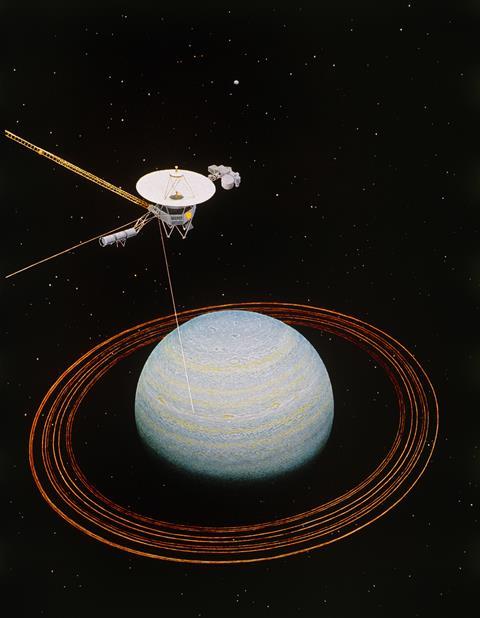
Sunlight breaking down methane can explain traces of acetylene and ethane detected by Voyager 2. ‘We don’t see thick cloud, but a photochemical haze in the atmosphere,’ says Irwin. ‘In a short vertical height, you go from 4% methane to pretty much none.’ This hydrocarbon haze impedes observations of the atmosphere from Earth, or even from space-based telescopes. Some chemicals that are vital for understanding the planet’s composition and origin don’t have a signature detectable via remote sensing, making observations from Earth impossible.
The next cloud level likely consists of hydrogen sulfide, at around 3–6 bar. Eventually, as pressure and temperatures rise at deeper levels, decks of water ice and ammonia ice clouds may form. But here it gets even murkier. ‘It is really hard to say how much water is present below the clouds,’ says Leigh Fletcher, a planetary scientist specialising in atmospheres at the University of Leicester, UK. ‘We can’t study it via remote sensing very easily because these clouds may be very deep, merging into a vast interior ocean,’ Fletcher explains. ‘Exactly how and where this happens is where our understanding of ice giant atmospheres and interiors completely dies away.’
Unfortunately, Voyager 2’s cameras missed wavelengths beyond orange. ‘There’s all this extra cloud structure that you can’t see without the infrared wavelengths,’ says Simon. This is something Earth-based observations struggle with. The solution is for a probe to enter the Uranian atmosphere with spectrometers. Such a craft might resemble the Galileo probe that entered Jupiter’s atmosphere in December 1995. This survived crushing pressures to record water, methane, ammonia, hydrogen sulfide and traces of hydrocarbons, failing at around 22 bar. Scientists hope that a Uranian probe can get to 10 bar at least, possibly 20 or even as high as 50, though transmitting the signal back to the orbiter could prove challenging at those depths.
Getting something into the atmosphere will be groundbreaking
Helled also views a probe as essential. ‘This can give us boundary conditions for our structural models and also reveal something about the origin and evolution [of Uranus].’ The relative abundances of noble gases such as neon and krypton in the atmosphere can allow researchers predict how far out from the sun a planet formed. This is especially interesting for the ice giants, since there is a suspicion that they formed much closer to the sun. As Jupiter and Saturn grew in mass, it is possible that their gravity disrupted the orbits of Uranus and Neptune, explains Kunio Sayanagi, a planetary atmospheric scientist at Hampton University in Virginia, US, and a member of the NAS survey. It is even possible that Uranus and Neptune swapped places as the seventh and eight planets.
Coustenis was part of the steering committee for the NAS decadal survey. She is confident that the European Space Agency (ESA) will contribute to a Nasa-led mission to Uranus, perhaps developing an accompanying probe. This is what happened with the Cassini mission to Saturn, when ESA developed the Huygens probe that landed on Saturn’s largest moon, Titan, in January 2005.
There will be no landing on ice giants, however, which are unlikely to have a solid surface. ‘It is all atmosphere,’ says Simon. ‘It’s just a matter of how cold or how slushy that atmosphere really is.’ A probe is therefore key for views below the clouds. ‘Getting something into the atmosphere will be groundbreaking,’ says Paul Byrne, planetary scientist at Washington University in St. Louis, US. The in-situ analyses will be able to provide a ‘ground-truth’ for other observational data.
Strangely tilted
The other half of any mission will be an orbiter that can continuously monitor the gravitational field, revealing the planet’s density profile, and thereby its composition and structure. The spacecraft Juno is doing this for Jupiter. ‘As the spacecraft goes around Jupiter, the tiny little pushes and pulls it experiences due to the gravitational field allow you to infer the density distribution and strength of the winds down to great depth,’ explains Fletcher.
Earth’s molten nickel–iron core generates a magnetic field akin to a bar magnet, with a magnetic north and south. Not so for Uranus, whose field is messier and off-centre. The planet is tilted to 97.8° and as it rotates the magnetosphere becomes twisted, with Voyager 2 observing it tilted 59° compared to its rotational axis. ‘These fields are being twisted into a complex helix downstream of Uranus by the rotation of the planet,’ explains Fletcher. Its dynamic nature necessitates an orbiter, Uranian experts argue. ‘It’s a weird configuration,’ says Simon of the magnetosphere. ‘We really need to map that field to understand its orientation.’
One pole can experience four decades of darkness, followed by four decades of sunshine
Observations from Cassini and Juno around Saturn and Jupiter suggest that metallic hydrogen generates their magnetosphere, but the origin of the ice giants’ remains a puzzle. ‘It could be this slushy and ionised ammonia–water mix that is moving and spinning, generating magnetic fields that are time-dependent and vary a lot,’ says Byrne. While Earth’s magnetic field deflects charged particles from the sun, on Uranus, the field may periodically open to highly charged particles that alter atmospheric composition locally, perhaps supercharging the atmosphere’s photochemistry or causing lightning.
The planet’s extreme axial tilt of 97.8° means that, unusually, the poles get more sunshine than the equator. The atmosphere also experiences the most extreme seasons anywhere in the solar system, notes Fletcher. ‘One pole can experience four decades of polar darkness, followed by four decades of spring and summer sunshine,’ he says. ‘That must have profound consequences for atmospheric chemistry and the production of clouds and hazes.’ Understanding Uranian weather better will require a long-term orbiter.
Why the planet lies on its side is another mystery. The most frequently cited explanation is that a planetary object slammed into a youthful Uranus with enough force as to knock it sideways. One simulation suggested that a body at least twice as massive as Earth merged with a young Uranus, perhaps delivering material that remains within the planet as a layer.
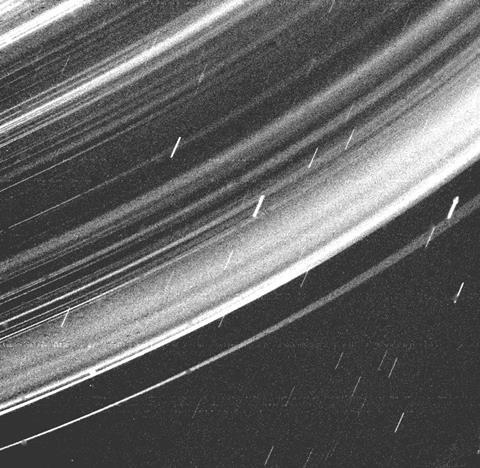
The strange tilt and possibility of a collision may be linked to another observation that sets Uranus apart from Neptune and the two gas giants. Those planets radiate away the heat generated at the time they condensed and compressed matter during formation. While Neptune emits around two-and-a-half times more heat than delivered by the Sun, Uranus is in thermal equilibrium. ‘Neptune seems to have lots of heat left over from formation, while Uranus has almost none,’ says Irwin. One consequence, according to Fletcher, is a more placid atmosphere on Uranus than on turbulent Neptune.
This heat of formation could have escaped due to a violent collision, or alternatively the planet could be layered in a way that traps heat. The newly proposed mission can help answer such questions. ‘We’re still trying to piece together whether [the ice giants] migrated out, and what the heck knocked Uranus over,’ says Simon. Such early planetary evolution is based on best guesses right now. ‘Once we get good gravity field data and figure out its internal structure, that is going to tell us a lot,’ Simon says.
The planet’s moons and a ring system also move around its lopsided axis. The rings are not as developed as around Saturn. The Uranian rings are ‘very dusty’, says Byrne, and contain ‘a lot less ice than say Saturn’s rings’. They could conceivably be remnants of a past collision. An orbiter can study them, which seem different in composition to the Uranian satellites.
Neptune and beyond
Before Voyager 2 began observing Uranus, there were five known moons, named after characters from Shakespeare – Miranda, Ariel, Umbriel, Titania and Oberon. The spacecraft discovered 11 new moons, and 27 are now known. The flyby revealed geological activity on some large ice–rock moons and these are potential ocean worlds. Titania and Oberon may be large enough to harbour subsurface oceans, ‘especially if their water layers contain sufficient amounts of ammonia or other antifreeze’, the recent NAS report noted. ‘A third, Ariel, might have been tidally heated to the point of creating a water ocean in its interior.’ This makes them of interest in terms of habitability. ‘It is a very strange set of moons,’ says Simon.
Yet another reason to prioritise the ice giants is that their size is the most common among the exoplanets detected in our galaxy. ‘Going to Uranus allows us to visit a representative of potentially a very common kind of world,’ says Byrne. And while thousands of exoplanets have now been detected, with more sure to be discovered by the James Webb Space Telescope, our own local ice giants remain enigmatic. ‘We have two examples of these planets in the solar system, and we really don’t understand them,’ says Helled.
Uranus really is the next big thing to explore in the solar system
Still, there is the lure of ground-breaking science from a Uranian mission. ‘This is science for the entire planetary community,’ says Simon. ‘There’s something for geologists to study, for atmospheric scientists, for magnetosphere and heliosphere people and it also informs us on extrasolar planets.’ Planetary scientists are not waiting around for the new mission, however, and research results are still published from re-analyses of the Voyager observations, confirming the importance of close encounters.
Inevitably, planetary scientists believe a mission to Neptune should be next on the cards, after Uranus. Nonetheless, even an optimistic scenario will see a Uranus mission launched in the early 2030s, to arrive in the mid-2040s at the earliest.
‘We had Cassini at Saturn, and Juno at Jupiter, and now it’s time to understand these outermost planets better,’ says Helled. ‘It really is the next big thing to explore in the solar system.’ This sentiment is shared by her colleagues. ‘It is high time to address the knowledge gap and learn about ice giants,’ concludes Ehlmann.
Anthony King is a science writer based in Dublin, Ireland

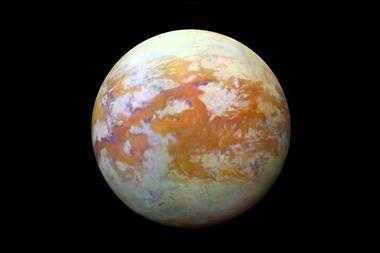



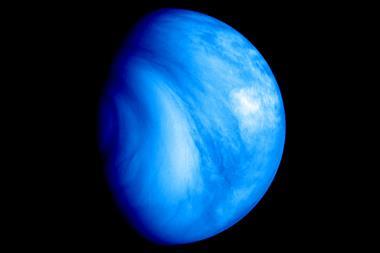
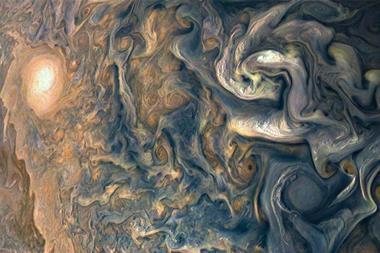






No comments yet